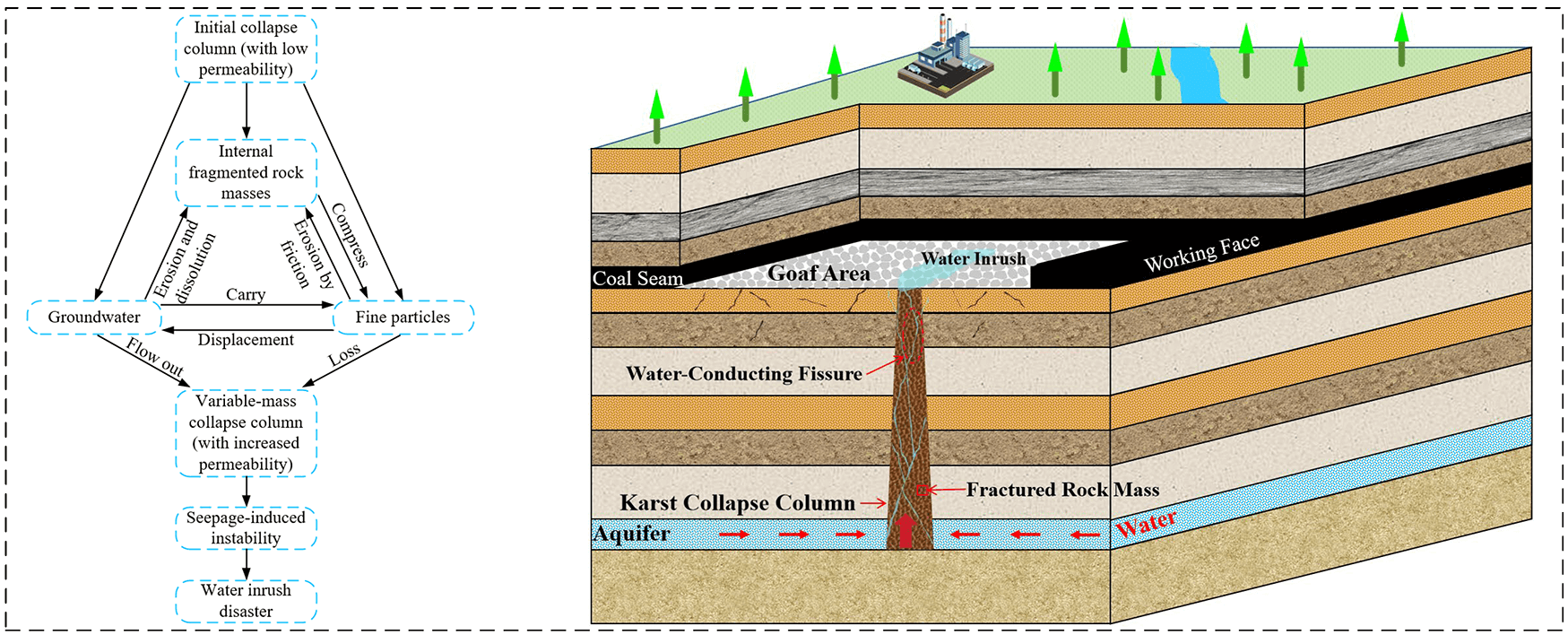 Open Access
Open Access
REVIEW
State-of-the-Art Review on Seepage Instability and Water Inrush Mechanisms in Karst Collapse Columns
1 School of Civil Engineering, Henan Polytechnic University, Jiaozuo, 454003, China
2 School of Resources and Environment, Henan Polytechnic University, Jiaozuo, 454003, China
3 Henan Mine Water Disaster Prevention and Control and Water Resources Utilization Engineering Technology Research Center, Henan Polytechnic University, Jiaozuo, 454000, China
4 Collaborative Innovation Center of Coal Work Safety and Clean High Efficiency Utilization, Jiaozuo, 454000, China
* Corresponding Author: Cunhan Huang. Email:
Fluid Dynamics & Materials Processing 2025, 21(5), 1007-1028. https://doi.org/10.32604/fdmp.2025.062738
Received 26 December 2024; Accepted 15 April 2025; Issue published 30 May 2025
Abstract
Karst collapse columns typically appear unpredictably and without a uniform spatial arrangement, posing challenges for mining operations and water inrush risk assessment. As major structural pathways for mine water inrush, they are responsible for some of the most frequent and severe water-related disasters in coal mining. Understanding the mechanisms of water inrush in these collapse columns is therefore essential for effective disaster prevention and control, making it a key research priority. Additionally, investigating the developmental characteristics of collapse columns is crucial for analyzing seepage instability mechanisms. In such a context, this paper provides a comprehensive review of four critical aspects: (1) The development characteristics and hydrogeological properties of collapse columns; (2) Fluid-solid coupling mechanisms under mining-induced stress; (3) Non-Darcy seepage behavior in fractured rock masses; (4) Flow regime transitions and mass variation effects. Key findings highlight the role of flow-solid coupling in governing the seepage mechanisms of fractured rock masses within karst collapse columns. By synthesizing numerous studies on flow pattern transitions, this paper outlines the complete seepage process—from groundwater movement within the aquifer to its migration through the collapse column and eventual inflow into mine roadways or working faces—along with the associated transformations in flow patterns. Furthermore, the seepage characteristics and water inrush behaviors influenced by particle migration are examined through both experimental and numerical simulation approaches.Graphic Abstract

Keywords
Cite This Article
 Copyright © 2025 The Author(s). Published by Tech Science Press.
Copyright © 2025 The Author(s). Published by Tech Science Press.This work is licensed under a Creative Commons Attribution 4.0 International License , which permits unrestricted use, distribution, and reproduction in any medium, provided the original work is properly cited.


 Submit a Paper
Submit a Paper Propose a Special lssue
Propose a Special lssue View Full Text
View Full Text Download PDF
Download PDF Downloads
Downloads
 Citation Tools
Citation Tools